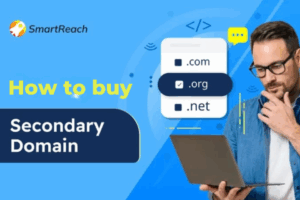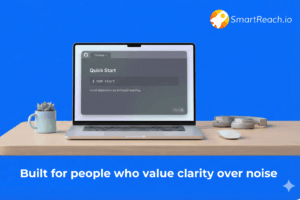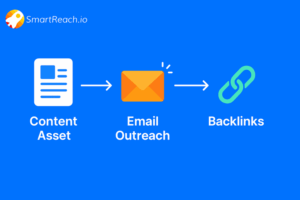How to Position Your SaaS Brand in Cloud Markets?
In today’s fast-growing cloud industry, many businesses face a challenge: they offer great technology but struggle to stand out. When nearly every provider promises scalability, 99.9% uptime, and “enterprise-grade” security, how do you build a brand that captures attention?
In crowded markets, differentiation isn’t just about what your product does, it’s about how your brand makes customers feel and the values it represents.
This article shows how SaaS and cloud companies can stand out beyond technical features by using emotional branding, thought leadership, and authentic storytelling to build stronger customer relationships.
Why Brand Positioning Matters in Cloud Markets
The cloud industry is booming, the global cloud computing market will exceed $1.6 trillion by 2030 (Grand View Research, 2024). But rapid growth brings a problem: everything starts looking the same. Providers compete on minor performance improvements or pricing, leading to smaller profits and tired buyers.
Here’s the key insight: Most B2B purchase decisions today aren’t purely logical. According to Gartner’s B2B Buyer Behavior Study (2023), over 70% of enterprise decision-makers say they’re influenced as much by trust, shared values, and brand perception as by product features.
In other words, standing out starts with storytelling, credibility, and emotional connection, not just specs. Cloud brands that understand this thrive even in saturated markets.
Why Every Cloud Provider Feels the Same
When evaluating cloud providers, developer tools, or SaaS platforms, you’ll see similar promises: “seamless integration,” “limitless scalability,” “99.99% uptime.” These features are now expected, not special.
In commodity markets, value parity is inevitable. What’s “cutting-edge” today becomes standard next quarter. This forces brands to compete on intangibles: vision, customer experience, and emotional connection.
Consider how SmartReach.io, a sales automation platform, gained traction not by undercutting competitors like Outreach.io or SalesLoft on features, but by positioning itself as the “personalization-first cold email solution.”
Instead of competing on email volume, SmartReach emphasized email warmup, deliverability, and hyper-personalized sequences, addressing inbox placement issues larger competitors overlooked. That clarity helped it carve a niche despite similar technical capabilities.
Common Mistakes: Why Many Cloud Brands Fail to Stand Out
Several recurring mistakes keep SaaS and cloud brands from breaking through:
Feature obsession: Focusing too much on product details without explaining customer outcomes.
Generic messaging: Using the same buzzwords – “AI-driven,” “scalable,” “secure”, without a unique story.
Weak thought leadership: Failing to create original insights that establish authority.
Transactional branding: Treating B2B buyers as purely logical, ignoring their emotional and aspirational needs.
This creates what analysts call “feature fog”, where every brand looks and sounds identical.
Strategies to Build a Distinct Brand Identity
a. Create Thought Leadership That Shapes Conversations
True differentiation comes from owning an idea, not just a product category. Brands like HubSpot and Snowflake lead because they shape how people think about marketing automation and data collaboration.
Develop whitepapers, webinars, or research-backed insights addressing emerging challenges, not just what your product solves, but why it matters. For example, SmartReach publishes guides on cold email best practices, GDPR compliance, and inbox placement algorithms, positioning itself as an educator, not just a vendor. This thought leadership builds trust and establishes authority.
b. Build Emotional Connections Through Storytelling
B2B buyers are people first. They respond to authenticity, empathy, and vision. Instead of describing performance metrics, tell stories about impact, how your service empowered a small business, improved workflows, or prevented downtime during crises.
Take MusicCreator AI as an example, a SaaS platform helping users generate music through AI technology. Rather than only emphasizing algorithmic precision, the brand highlights how it enables creators to express emotions through Text To Music, bridging technology with human creativity. That emotional framing gives it depth beyond functionality.
Similarly, SmartReach.io uses storytelling by highlighting customer success stories, like how a B2B startup reduced cold email bounce rates by 40% using AI-driven warmup. By framing value around real outcomes (meetings booked, inboxes reached) instead of technical specs, SmartReach transforms a transactional tool into a partner in revenue growth.
c. Use Innovation Messaging Wisely
Innovation alone isn’t compelling; relevance is. Instead of showcasing how advanced your platform is, focus on how your innovation solves unmet needs.
When cloud provider Backblaze introduced its storage solution, it didn’t pitch speed or scalability; it told a story about transparency and fairness in pricing, something users deeply valued amid hidden fees elsewhere.
d. Align Brand Values With Market Movements
Modern buyers, even in B2B, expect brands to take stances. Sustainability, digital ethics, and data privacy aren’t just compliance issues; they’re branding opportunities. Aligning your identity with meaningful values builds trust.
Salesforce’s commitment to equality and inclusion has become integral to its brand, one reason customers feel connected beyond CRM capabilities.
Key Considerations for Brand Differentiation
Even strong ideas fail without execution. To succeed:
Ensure internal alignment: Employees must live the brand story. For example, SmartReach embeds its “personalization-first” philosophy not just in marketing but in customer onboarding, every new user receives a personalized setup call, not a generic demo. This consistency reinforces the brand promise at every touchpoint.
Be consistent across channels: Tone, visuals, and promises must align across your website, LinkedIn, support interactions, and sales conversations.
Validate with data: Use A/B testing, sentiment analysis, and brand perception surveys to ensure your message resonates. Beyond surveys, evaluate how AI search results and chat assistants describe your company. As LLMs increasingly shape discovery, if AI summaries skew your messaging, monitor brand perception across AI-generated answers, track sentiment and share of voice, and correct misinformation fast.
Avoid over-branding: Authenticity beats polish. Overproduced “corporate sincerity” often feels hollow.
Why Brand Positioning Matters Now More Than Ever
SaaS competition is fiercer than ever, with over 30,000 active SaaS companies in 2025 (Statista). As AI integration accelerates, product differentiation will shrink even faster.
Winners will be brands that own space in customers’ minds, not just the market. According to McKinsey’s Cloud Growth Survey (2024), companies with strong emotional branding see 23% higher customer retention and 31% higher renewal value.
Strong brands also reduce price sensitivity, allowing healthier margins in competitive markets.
Case Study: How Emotional Branding Transformed Perception
Let’s examine how SmartReach repositioned itself in the crowded sales automation space. Instead of competing with giants like Outreach on feature breadth, SmartReach shifted its narrative toward email deliverability and personalization at scale, two pain points resonating with SMBs and startups burned by spam filters and low reply rates.
By emphasizing “reach inboxes, not spam folders” and offering built-in email warmup (a feature competitors charged extra for), SmartReach appealed to cost-conscious teams seeking ROI, not vanity metrics. The brand also invested in thought leadership, publishing guides and best practices, positioning itself as an educator.
This shift repositioned SmartReach as the “smart choice for teams who care about deliverability” rather than just another automation tool, proving that strategic messaging can redefine market relevance even for emerging SaaS brands.
Challenges and Limitations
Not all differentiation efforts yield immediate ROI. Challenges include:
Long lead times: Building brand equity takes months or years.
Measurement difficulty: It’s harder to quantify perception shifts than lead conversions.
Internal resistance: Technical teams may undervalue emotional branding.
Still, the long-term payoff, higher customer lifetime value, stronger brand recall, and sustainable pricing power, justifies the investment.
The Future of Brand Positioning in Cloud Markets
As AI, automation, and edge computing reshape cloud landscapes, brands must evolve from product-first to experience-first narratives. Expect these trends:
AI-driven personalization: Using generative AI to tailor brand communication for specific personas.
Human-centered design: Blending advanced tech with emotional accessibility, making complex systems feel intuitive.
Community-led branding: Brands fostering ecosystems where customers co-create, share insights, and feel ownership.
In a few years, the strongest cloud brands won’t just sell infrastructure, they’ll sell belief systems, communities, and confidence.
Final Thoughts
Standing out in a commoditized cloud market is no longer about who has the best servers or lowest latency. It’s about who tells the most compelling story, who earns trust, and who aligns with customer aspirations.
Brands like SmartReach prove this daily, by focusing not on who sends the most emails, but on who helps sales teams build genuine connections through smarter, personalized outreach. In a world of spray-and-pray tactics, SmartReach stands out by making cold email feel human again.
By merging analytical precision with human empathy, cloud brands can transcend competition. The future belongs to those who build powerful products and inspire belief, just as MusicCreator AI inspires creators to transform words into melodies through Text To Music, reimagining how technology and emotion coexist.
In a world full of identical clouds, the brightest brands will be the ones that feel different.
Frequently Asked Questions (FAQs)
What is brand positioning in SaaS?
Brand positioning in SaaS is how your software company is perceived in the market relative to competitors. It defines your value proposition, target audience, and emotional connection beyond product features. Strong positioning reduces price sensitivity and increases customer loyalty in crowded markets.
How do you differentiate a SaaS brand in a crowded market?
Differentiate by focusing on emotional resonance, thought leadership, and niche expertise rather than features. Identify a specific pain point competitors overlook and own that narrative. Build credibility through original research, case studies, and educational content to position yourself as an authority.
Why is emotional branding important for B2B SaaS?
Emotional branding matters because B2B buyers are people influenced by trust, values, and brand perception, not just ROI. Gartner found 70% of enterprise decision-makers prioritize trust alongside capabilities. Emotional branding builds loyalty, reduces churn, and enables premium pricing through deeper relationships.
What is commoditization in cloud markets?
Commoditization occurs when products become so similar in features, pricing, and performance that differentiation becomes difficult. In cloud/SaaS, rapid innovation replication makes today’s cutting-edge features tomorrow’s standard. This forces brands to compete on intangibles like trust, experience, and thought leadership.
How do you build thought leadership in SaaS?
Build thought leadership by creating original, research-backed content that shapes industry thinking. Publish whitepapers on emerging trends, host expert webinars, or release data-driven reports. Become the go-to resource for insights through consistent, valuable content creation.
What are common branding mistakes in SaaS?
Common mistakes include feature obsession without outcome explanation, generic buzzword messaging, weak thought leadership, and treating B2B buyers as purely logical. These create “feature fog” where brands become indistinguishable, forcing competition on price alone.
How do you measure brand positioning effectiveness?
Measure through brand recall surveys, Net Promoter Score (NPS), sentiment analysis, organic search visibility, customer retention rates, and pricing power (ability to maintain margins). Track share of voice in industry conversations and monitor customer acquisition cost trends.
What role does storytelling play in B2B branding?
Storytelling transforms technical products into relatable solutions by highlighting real customer outcomes and emotional impact. It builds trust, makes complex concepts accessible, and creates memorable brand experiences. Effective B2B storytelling focuses on customer success journeys, not feature lists.



